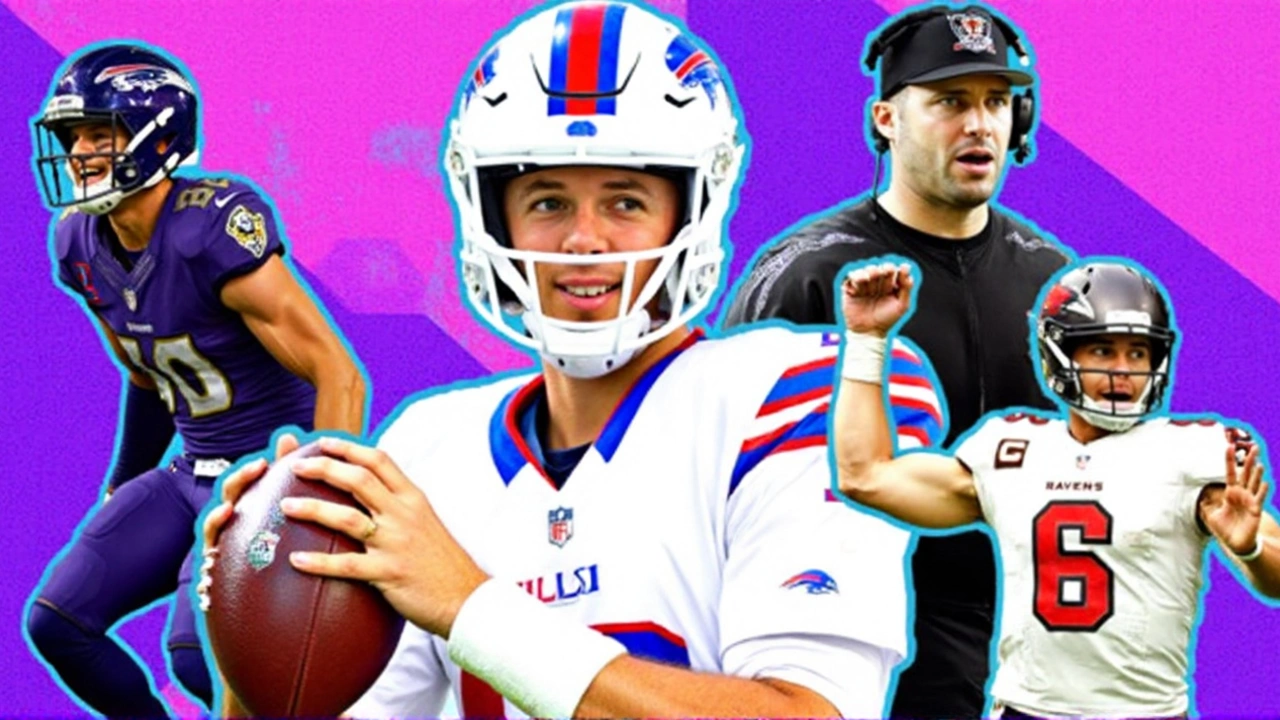 Sep, 5 2025
Sep, 5 2025
The missing link and the questions it raises
The specific ESPN article about simulating the entire 2025 NFL season isn’t available, but the concept is familiar. Every summer, models run thousands of spins on the schedule to see which teams are built to last and which ones are living on vibes. Those runs don’t predict the future; they frame the season—who’s favored, who needs breaks, and where surprise endings tend to come from.
So what would a credible simulation likely show right now? It would put elite quarterbacks at the center of the map, because they move win probabilities more than any other position. It would flag teams with top-five offenses or defenses by efficiency as steady playoff bets. And it would spend a lot of time on schedule shape—rest days, cross-country travel, and stacked road trips quietly decide seeding more than fans think.
Power rankings would mirror that math. Clubs with stable coaching, strong offensive lines, and proven QB play usually anchor the top tier. Teams leaning on big-name skill players but thin in the trenches would grade as volatile—high ceiling, ugly floor. A few rebuilds would pop as trendy wild cards if their second-year quarterbacks take a leap and their defenses stop bleeding explosive plays.

How a full-season simulation frames 2025
Good models mix talent grades with context. They blend play-by-play efficiency (like Expected Points Added), opponent adjustments, and projected snaps for key players. Then they roll the schedule thousands of times to produce ranges, not absolutes. Here’s what those outputs typically highlight once you stare at them for long enough:
- Quarterback gravity: Top-tier QBs add multiple wins by themselves. The difference between elite and merely good often shows up in late-game win probability—one extra third-and-long conversion per week swings seasons.
- Offensive line truth serum: Pass protection is the hidden input behind MVP chatter. A line that holds up on third-and-7 keeps drives alive, inflates EPA, and makes defenses play on their heels. Models punish leaky protection.
- Defensive volatility: Takeaways and red-zone stops wobble year to year. Sims temper last season’s splash plays and ask whether pressure and coverage are sustainably good, not just lucky.
- Strength of schedule, for real: It’s not just who you play; it’s when. Three road games in four weeks? A London or Germany flight right before a division stretch? Short weeks against fast offenses? Those show up as meaningful dents in win totals.
- Injury math: Most simulations assign snap projections and “availability” curves to stars. Depth at premium spots—QB2, tackle, corner—doesn’t wow in July, but it protects win totals when reality hits in November.
From there, the model outputs the storylines fans care about:
- MVP lanes: Quarterbacks on top-five offenses with 12-win ceilings sit in pole position. If a non-QB gets traction, it’s usually an edge rusher posting absurd pressure rates or a receiver breaking yards-per-route numbers on a playoff team.
- Coach-of-the-Year patterns: Big jumps drive votes. Teams jumping from seven wins to eleven—often because of healthier lines and second-year QB growth—fuel this award.
- Breakout candidates: Young receivers who already separate well, second-year corners with sticky coverage grades, and coordinators with clear tendencies that fit their personnel.
- Hot-seat heat: If the simulations consistently cap a team at eight wins despite splashy names, it usually points to structural issues—scheme fit, protection, or defense that can’t get off the field on third down.
- Playoff odds and seeding: Top teams cluster around double-digit wins, but the No. 1 seed often swings on a coin-flip game or two decided by turnovers and special teams. The model shows that margin.
Let’s talk divisions. Simulations usually find one “rock fight” division where all four teams hover between 7–10 wins. Those races come down to head-to-head splits and late-season health. Another division tends to produce a bully—13 wins—and three also-rans. Schedule quirks, like who draws a brutal December cold-weather slate or back-to-backs on short rest, often explain the spread.
Trade season lurks in the numbers. Most models don’t hard-code midyear additions, but they can show which teams should be buyers. If you’re 5–3 with strong underlying efficiency and the softest remaining schedule, the model screams for a deadline move at corner or right tackle. That move doesn’t guarantee a title run; it tightens the error bars.
International and primetime games matter more than they seem. Crossing time zones without a bye week or living on short weeks can sap late-game legs. Night-game travel can compound fatigue for teams with thin rotations at receiver or defensive line—another small edge that stacks across 17 games.
What about the chaos everyone remembers? Simulations actually account for it by running so many seasons that weird outcomes show up with the right frequency. A mid-tier team sweeping close games climbs to an unlikely 12–5. A favorite loses two linemen and tumbles to 9–8. The point isn’t to lock in one ending—it’s to map the ways the season can break.
How should you read power rankings against all this? Treat them like snapshots of median outcomes. If a team sits 14th but owns top-10 efficiency and great injury luck in a few runs, its ceiling is higher than the rank. Conversely, a top-five ranking with a thin line and brutal travel is a fire drill waiting for bad luck.
Finally, a quick checklist for fans sizing up any season simulation:
- Start with quarterback, offensive line, and pass rush. If those three are strong, the floor is high.
- Check schedule density—rest days, back-to-backs, and travel. They quietly flip one or two games.
- Look for sustainable metrics. Pressure and success rate travel; turnover luck does not.
- Scan depth at fragile spots: tackle, corner, receiver, and backup QB.
- Remember ranges. A 9.6-win projection means 7–12 wins are in play, not that 10 is inevitable.
The missing ESPN link is annoying, sure. But the blueprint for a full-season run-through is clear: focus on who controls downs, who protects the quarterback, and who survives the schedule. That’s where the season tilts—and where the simulations, as cold as they look, usually feel the most human.